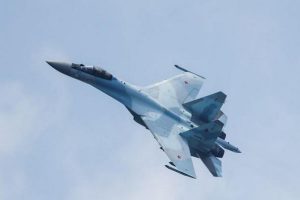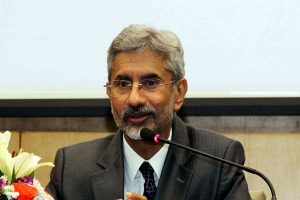The road leading to Ayacucho, the city where started the political experience of Abimael Guzmán (the main Peruvian political prisoner who died a few days ago at the Maximum Safety Center of the Callao Naval Base), is very rough and as one travels along it one breathes an air of mystery. Located in the middle of the Peruvian Sierra, the city has long been marked by extreme poverty. It forms part of a landscape where, up until a few decades ago, agricultural production was still organized on a semi-feudal basis. It is a treasure that has never ceased to arouse the interest of anthropologists and scholars of popular traditions. And yet, it was precisely this remote place, until the mid-1970s lacking an asphalt connection with the coast and a real electrical system and television, that gave rise to the events that changed, irreversibly, the contemporary history of Peru and that returned to make this nation talked about throughout the world.
In 1962, a young twenty-eight-year-old university professor arrived in Ayacucho to teach philosophy. Introverted and shy, he came from the beautiful city of Arequipa, where he had studied at the Catholic high school, distinguishing himself for discipline and asceticism. Shortly after his arrival, Abimael Guzmán learned quechua, the most widespread language among the indigenous peoples of Latin America, and began an intense political militancy. A few years later, he would become famous throughout the world as the leader of Shining Path, the Maoist guerrilla movement that in the 1980s waged a bloody conflict with the Peruvian state, causing the death of almost 70,000 people over the course of twenty years. In the 1960s, with the outbreak of the Sino-Soviet crisis, the communist world split into two blocs. Originally a loyal Stalinist, Guzmán sided with the Chinese and became a Maoist. The following years saw a succession of splits among the Peruvian left, and in 1970 Guzmán led a splinter group away from the main Maoist party, naming it the Peruvian Communist Party ~ Shining Path. The group declared itself heir of the Chinese Cultural Revolution, which was “the main event in human history”, the one that had discovered “how to change souls”.
Advertisement
Despite its proclamations, the organization was born without any relation to the peasantry. At its inception, its adherents were only 51 and, for a long time, its political presence was limited to the university of Ayacucho, where the teachers and the new technical personnel of the whole interior-southern region of Peru were being trained.
During this period, Guzmán taught numerous courses on José Carlos Mariátegui, a prominent Marxist ~ considered by many to be the Latin American Gramsci ~ who, in the hands of Guzmán was transformed into a proto-Maoist thinker and the spiritual father of Shining Path, despite Mariátegui’s own distance from such dogmatism. Drawing on schematic Marxist manuals, Guzmán began to spread an extremely deterministic worldview among the Andean youth of the area. The aim was to create a monolithic group with an oppressive relationship between the political party and society that did not allow any room for autonomy in the struggles. Shining Path, in fact, systematically opposed strikes and land occupations, manifesting, on more than one occasion, intolerance towards the indigenous culture.
Nevertheless, in Latin America, it was this party, small but sustained by an iron discipline, strongly centralized (its main governing body was composed of Guzmán, his wife and his future companion), and protected by the absolute secrecy of its militants, that came closer than any other to the conquest of political power through arms, a feat achieved only by Fidel Castro in Cuba and the Sandinistas in Nicaragua.
Between 1968 and 1980, Peru, like almost all other Latin American countries, experienced military dictatorship. At the end of the 1970s, Guzmán left the university to go underground and formed the People’s Guerrilla Army, a parallel structure to Shining Path. Guzmán was convinced of the necessity of armed struggle; in his interpretation, violence was understood as a scientific category and death, consequently, into the price that humanity would have to pay for the achievement of socialism: “the triumph of the revolution will cost a million deaths.”
The conflict arose in a surreal atmosphere. May 1980 saw the first political elections in Peru since 1963. In the central square of Chuschi, a village not far from Ayacucho, militants of Shining Path burnt all the ballot papers. The episode was completely ignored by the government, just as no attention was paid to the macabre spectacle that the inhabitants of Lima were forced to witness a few months later, when they woke up to find dozens of dead dogs hanging from traffic lights and street lamps, with the inscription, incomprehensible to most, “Deng Xiaoping son of a bitch”.
Initially, the Peruvian state underestimated the strength of Shining Path. In the middle of the 1970s, seventy-four different Marxist-Leninist organizations were operating in Peru and when the government of Fernando Belaúnde decided to intervene against Shining Path they hadn’t any knowledge of the political and military strategy of the group that they were fighting. It was erroneously considered to be similar to other Latin American guerrilla groups (for example, those of Guevarist inspiration), from which, instead, Shining Path was completely distant. Notwithstanding the still insignificant number of its militants ~ in the meantime increased to 520 ~ and the rudimentary nature of its arsenal, mostly old rifles, the popular war of Shining Path advanced considerably in this period. Therefore, Belaúnde decided to use the armed forces and Ayacucho became the area of a political-military command for the entire region.
This second phase of the conflict was distinguished by the violent repression of local populations. The racism of the soldiers from the city, who identified every campesino as a potential danger and a target to be eliminated, contributed to the increase in the number of deaths. Once the political sphere had been suppressed, the civil authorities were replaced by the army, who abused and arbitrarily ran the Civil Defense Committees, halfway between military camps and torture centers. Shining Path responded to this strategy by trying to create “counter-power”: the Popular Committees. In other words, “liberated zones”, strictly governed by commissioners appointed by the party, which served as a support base for the guerrillas. Furthermore, Guzmán decided to expand the conflict on a national scale, starting from the capital Lima. As a result, by the end of the decade (also because in 1984 the guerrilla Revolutionary Movement Tupac Amaru had also emerged) half of Peruvian territory was under military control.
In this phase, the Manichaen extremism of Shining Path designated all those outside the party as enemies. All areas not controlled by the Shining Path became military targets ~ including representatives of the campesinos, trade unionists and leaders of women’s organizations. The followed a strategy of selective annihilation, with the aim of creating power vacuums and then installing Shining Path’s leaders and militants in key political roles. In fact, local authorities (including the police) and leaders of social organizations represented the second target of Shining Path, after the peasants who opposed its directives. In total over 1,500 people died, 23 per cent of those deliberately murdered by Shining Path’s militants, and not killed in large-scale attacks.
At a time when Mikhail Gorbachëv started Perestroika in the Soviet Union and Deng Xiaoping was ferrying China towards capitalism, in Peru Guzmán was an outlier, giving directions for an intensification of war. Attacked by the government in its strongholds that were located in the most rural Peru, his influence grew in Lima – a huge city that at the time had seven million inhabitants, with over 100,000 refugees from the most dramatic conflict zones. The growth of Shining Path was also possible because of the spirit of revolt that permeated the popular classes, struck by the social disasters provoked by the outbreak of a serious economic crisis (in 1989 hyperinflation reached 2.775%) and by the severity of neo-liberal policies imposed by the technocrats close to Alberto Fujimori, the dictator who came to power with the elections in 1990 and author, in 1992, of an autogolpe that led to the closure of parliament and the cancellation of all democratic freedoms.
Meanwhile, Guzmán inspired a combination of terror among many Peruvians, particularly those who had reason to fear reprisals from Shining Path. At the same time, the cult of Guzman’s personality reached psychopathic levels. With the disappearance of any reference to Mariátegui’s socialism, Guzmán was transformed into a semi-divine figure among party militants. (By 1988, members of Shining Path numbered 3,000, while the People’s Guerrilla Army counted 5,000 among its ranks.) In the propaganda materials circulated at the time, Guzmán was spoken of as the “fourth sword (after Marx, Lenin and Mao) of Marxism”, the “greatest living Marxist on earth”, and the “embodiment of the highest thought in the history of humanity”.
During most of the conflict, Guzmán never left Lima and kept away from the risks and hardships of war. He was captured, on 12 September 1992, when some agents of the National Police of Peru (responsible of several bloody massacres during the war with Shining Path) found in the garbage of an apartment located in an upper-class neighborhood in Lima some discarded tubes of cream for the treatment of psoriasis, a disease that Guzmán was known to have. Shortly after his imprisonment, Guzmán proposed the peace agreement that he had always categorically rejected before and, in exchange for prison privileges, even went so far as to praise the corrupted Fujimori’s regime. These events were followed by eight more years of low-intensity guerrilla warfare between the profoundly authoritarian and corrupt Peruvian state and a sector of Shining Path ~ Proseguir (Continue) ~ that had not accepted the turn of the so-called “President Gonzalo”. Abimael Guzmán spent the rest of his life in prison and died on 11 September 2021, just 29 years after his capture. He will be remembered for having given rise to the most abominable political experience committed in the name of socialism.











